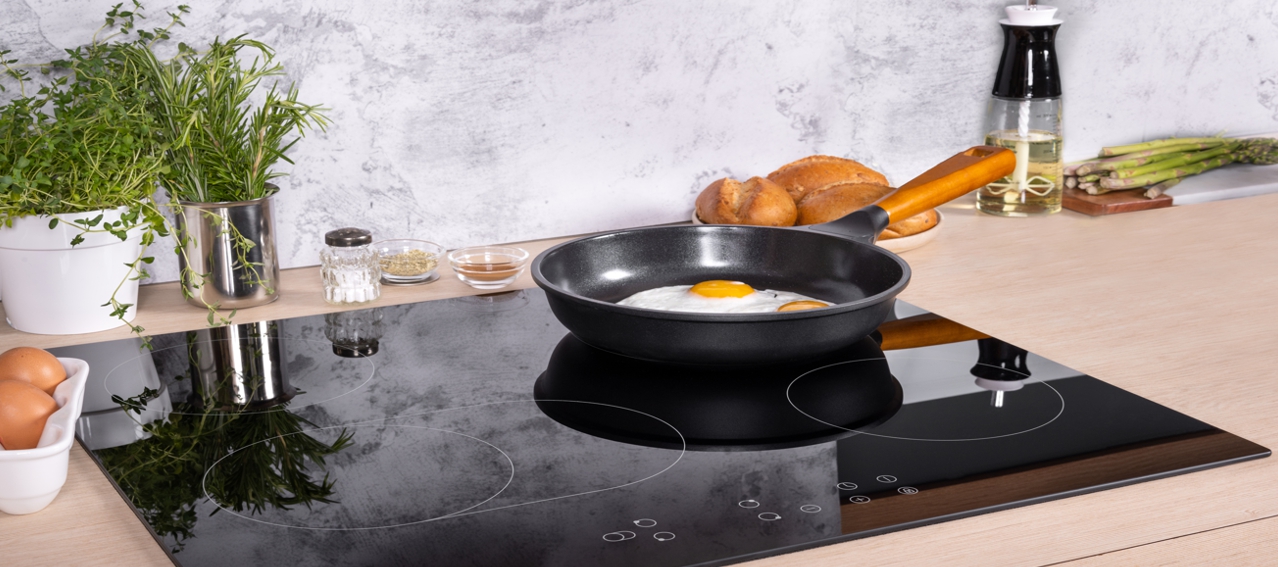Uneven Browning in Cast Iron on Induction Stoves: Why It Happens
Written By James Morgan
For those who relish the art of barbecue, nailing that perfect sear and achieving even browning on meats is crucial. However, this quest often faces obstacles when using cast iron on induction stoves. If you've experienced uneven browning in cast iron on induction, know that you are not alone. This commonly encountered issue can be quite daunting, especially for those who take their grilling seriously. In this article, we'll explore the reasons behind this matter and provide tips for achieving that evenly browned finish every barbecue lover aspires to.

Understanding Induction Cooking and Cast Iron
Before we delve into the specifics of uneven browning, it's vital to understand how induction cooking operates and why cast iron is a favorite among barbecue aficionados. Induction cooktops employ electromagnetic fields to produce heat directly in the cooking vessel, granting precise temperature control and energy efficiency. Cast iron is renowned for its superb heat retention and distribution, making it a popular choice for grilling and searing due to its ability to maintain elevated temperatures. However, this combination can sometimes yield unexpected results, such as uneven browning.
Why Does Uneven Browning Occur?
The main cause of uneven browning in cast iron on induction stoves lies in the nature of electromagnetic fields. Unlike traditional gas or electric stoves, the heat generated by induction focuses on specific areas of the pan, usually where the magnetic field is most robust. This can lead to hot spots and cold spots across the pan's surface. The thick and dense structure of cast iron can amplify this issue since it requires more time to heat up and distribute that heat evenly over the surface. Consequently, the edges of the pan may remain cooler than the center, which can cause uneven browning of your food.
How to Achieve Even Browning
To tackle the challenge of uneven browning, barbecue enthusiasts can implement several effective strategies:
1. Preheat Your Pan Properly
Proper preheating is essential when working with cast iron on induction. Make sure to let the pan warm up gradually and evenly before adding any food. This approach helps in spreading the heat throughout the entire surface, which reduces the risk of hot spots.
2. Use the Correct Size Burner
Ensure that your cast iron pan is proportionate to the induction burner's cooking area. Using a mismatched size can lead to uneven heating, as some parts of the pan may not be situated directly over the heat source.
3. Rotate the Pan During Cooking
Continuously rotating your cast iron pan on the induction burner can help create a more consistent cooking process. By adjusting the pan's position, different sections can receive direct heat, which aids in producing uniform browning.
The Role of Seasoning in Cast Iron Cooking
Seasoning your cast iron pan extends beyond rust prevention; it significantly impacts the cooking process. A well-seasoned pan enhances heat distribution, which contributes to more even browning. The oil used in seasoning forms a non-stick surface that improves the cooking experience on induction cooktops.
When to Season Your Pan
Regularly check your cast iron pan for signs of wear in its seasoning. If you observe food sticking or a dull surface, it may be time to reseason your pan. This straightforward maintenance task can notably improve your chances of achieving that ideal sear.
For additional tips on utilizing cast iron pans effectively over any heat source, visit this informative page on Lodge Cast Iron.
Exploring Alternatives and Complementary Tools
While cast iron is a beloved tool for many barbecue aficionados, considering alternative cookware or complementary tools is also beneficial. For example, employing a heat diffuser can assist in distributing heat more uniformly across the surface of your cast iron pan, thereby minimizing the risk of uneven browning. Additionally, using a lid can trap heat and create a more stable cooking environment.
FAQs
Q1: Can all cast iron pans be used on induction stoves?
A1: Yes, all cast iron pans are suitable for induction cooktops due to their ferrous metal composition, which is necessary for induction cooking.
Q2: How can I tell if my induction stove is causing uneven browning?
A2: If you notice inconsistencies in cooking or significant differences in browning on your food, it may be due to how the induction stove interacts with your cast iron pan.
Q3: Are there specific brands of cast iron pans that work better on induction stoves?
A3: While most cast iron pans function on induction stoves, some brands offer designs specifically optimized for induction cooking. It's wise to search for pans that prioritize even heating and flat bases for improved contact with the induction surface.
For further insights on how to choose the best pans for induction hobs, check out this Le Creuset guide.

Conclusion
Tackling uneven browning in cast iron on induction stoves can be challenging, but with the right techniques and tools, achieving the desired results is possible. By understanding the characteristics of both your cookware and cooking surface, you can enhance your barbecue experience and enjoy the perfect sear each time. Whether you're a seasoned grilling expert or just beginning your culinary journey, these tips can help elevate your cooking skills.
For an in-depth exploration of the science behind induction cooking and its interaction with various cookware types, consider checking out this Wikipedia article on induction cooking.
For further reading on related topics, explore our blogs on enameled cast iron, holiday grilling tips, and cast iron heating issues.



